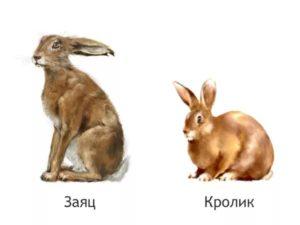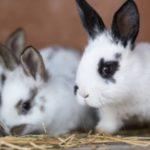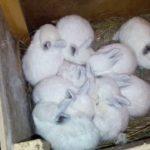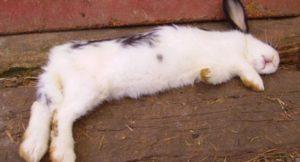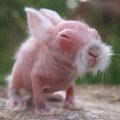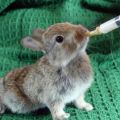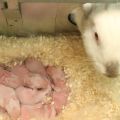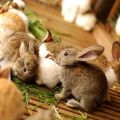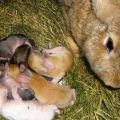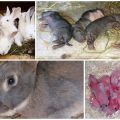When the rabbits begin to open their eyes and leave the nest, the stages of development
The appearance of bunnies is an exciting moment for every breeder. Babies require the care of a rabbit and the attention of the owner. It is necessary to closely monitor the behavior of the offspring and the female feeding it in order to promptly eliminate possible problems when raising young animals. It is important to notice when the rabbits open their eyes and that they leave the nest in time.
Appearance of babies
Newborn babies are helpless, the body is covered with thin fluff. Thanks to milk, even in the first days after birth, they develop rapidly. After a short time, the time comes when they open their eyes and leave the mother liquor.
Development of rabbits by day
At first, proper care of babies is important. In good conditions and with adequate nutrition of the rabbit, newborns grow quickly. You can see the changes occurring daily.
Vision
Newborn babies are completely helpless. It happens that if by chance an animal falls out of the nest, then it is not able to climb back, therefore it will die from hunger and cold. The owner needs to control this and, if necessary, return him to his place.
Hearing
The baby rabbit starts to hear normally at 7-9 days. The noise begins to scare the little ones, and you need to provide them with peace.

Wool
Babies are born naked. The fur breaks through for 2 days. Wool grows up to 5-6 mm in a week. At the age of 1 month, the animals molt for the first time.
Teeth
Babies have 16 milk teeth, they are laid before birth. At 2.5 weeks, they begin to be replaced with real ones. Newborns weigh up to 100 grams, the rabbit immediately licks them, which helps to remove the original feces. They are capable of reacting only to the parental odor. The first days they sleep almost all the time. The development of rabbits depends on the conditions of keeping, the temperature in the nest, the amount of milk in the rabbit.
When they open their eyes
Young growth begins to see at the age of 12 days. Before that, their eyes are closed, they survive thanks to the female and instinct, using only the sense of smell. Gradually, rabbits become independent, but they need breast milk further.
After that, they develop an interest in their surroundings. After 20 days, the nest becomes small for them, and the rabbits move into the cage. During this period, it is time to remove the mother liquor septum to increase the cell area. By day 20, the young should increase their weight by 10 times.
How many days do the rabbits leave the nest
The first time the babies begin to climb out of the nest in 2-3 weeks. The bravest ones do not explore the cage for long. But even a small rustle scares them, and the babies run away to the mother cell. Gradually they become self-confident and stay outside the nest for longer.
At this time, babies begin to try adult food, as an additive to breast milk. They need to be taught to an adult diet gradually. Babies are given far-reaching quality products, among them:
- vegetables (seasonal);
- hay (in winter);
- grain feed;
- roots.

Fertilizing is added to small rabbits gradually. First, add grated carrots, then boiled potatoes and just a little bit of fresh herbs. Having tried the new feed, the young begin to leave the mother house more often.
Attention! Experienced rabbit breeders say that it is bad if the babies get out of the queen cell late or too early. If they choose early, they don't have enough milk; and babies that do not leave the nest for a long time are distinguished by poor health.
Rabbits tolerate low temperatures well, rabbits are born in winter, even in frost. But winter mating should take place in a warm rabbitry. In light frosts, it is not necessary to heat it, but drafts should not be allowed.
Possible problems
Leaving too early is cause for concern. Experienced farmers understand that if still immature rabbits get out of the nest, they have too little milk. If you have such a situation, you need to assess the condition of the rabbit:
- The female's nipples are examined; inflammation can be detected.
- For a sample, you can easily squeeze one and see if milk comes out of it.
Females give a lot of milk and receive a balanced diet. On average, a female rabbit feeds 8 rabbits, but only if she has enough varied food. If the offspring is larger, then most of the milk will be received by the strongest animals, and the rest will eat up the rest. They remain hungry and leave the queen cell too early.
So, if the rabbits left the nest early, they are malnourished. This problem can be solved in two ways:
- Weak rabbits are transplanted to a dairy female with a small litter.
- Babies are fed with kitten mixes or goat's milk. One week-old rabbit is fed 5-10 ml of milk a day, when it turns 2 weeks - 10-15 ml per day, in 3 weeks - 15-20 ml of the mixture.
Gradually they are accustomed to ordinary food, which is given to an adult livestock. It is good if there is an opportunity to feed the young animals with compound feed for rabbits.
